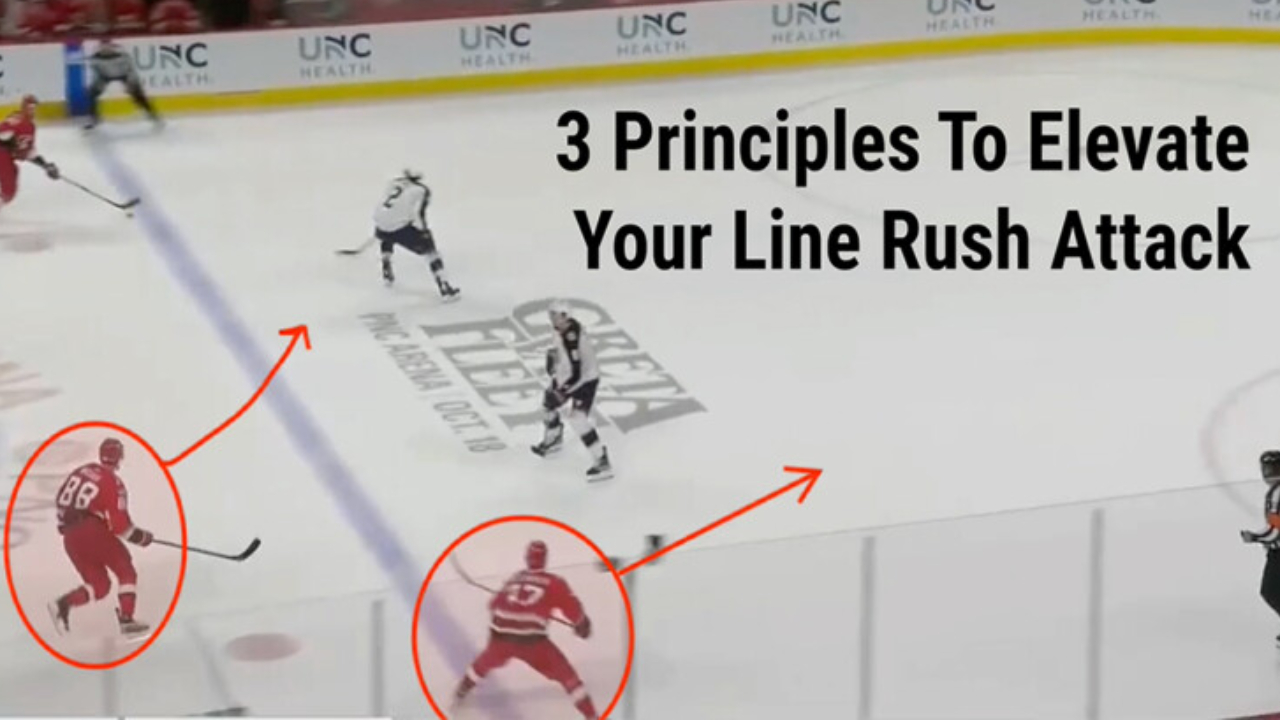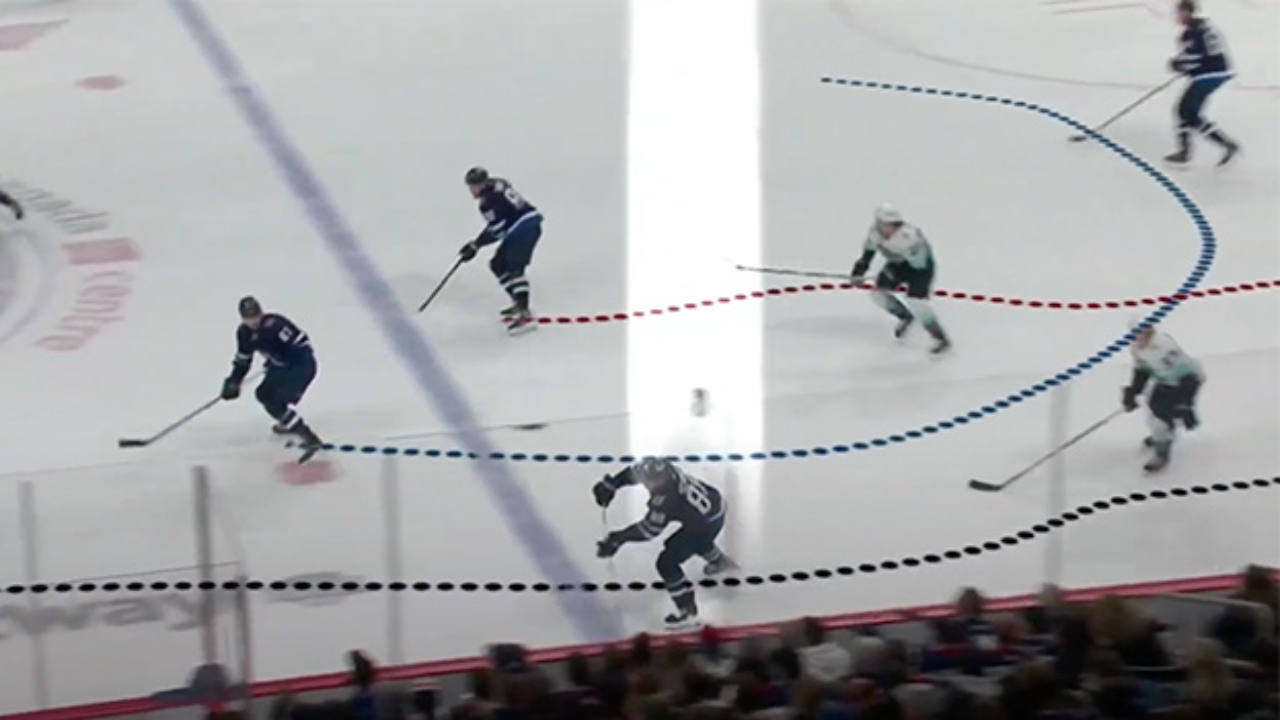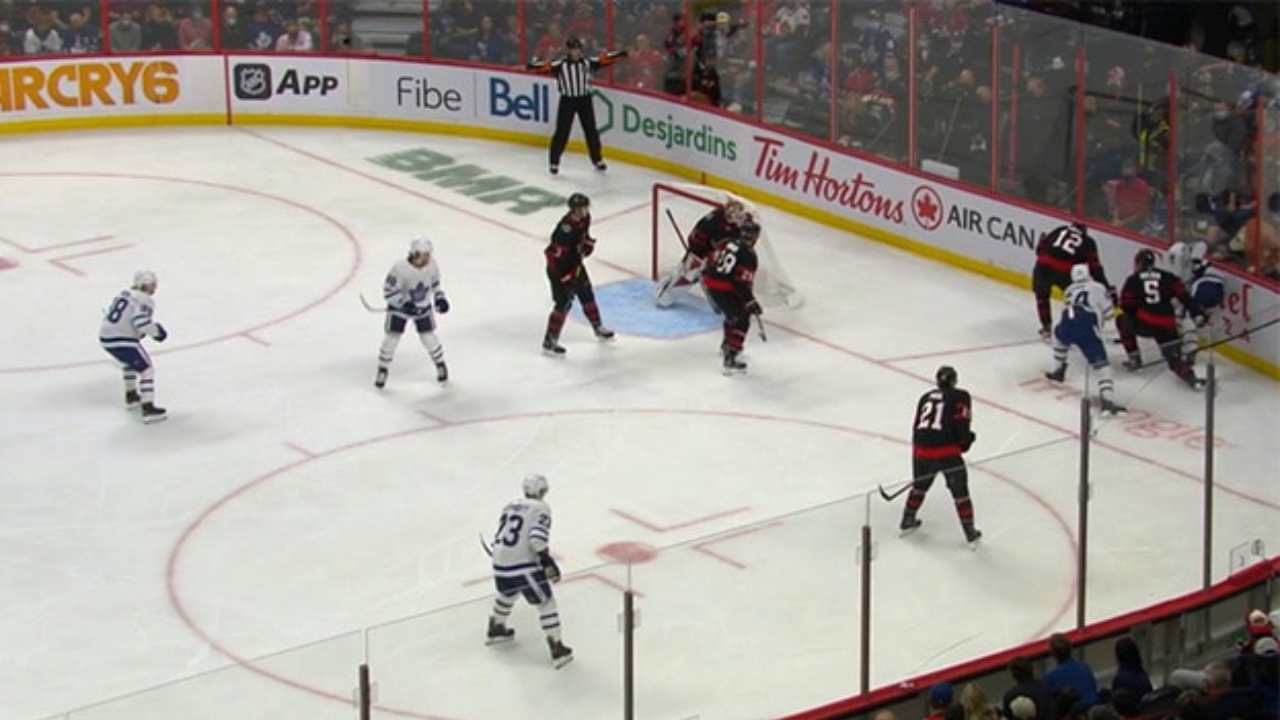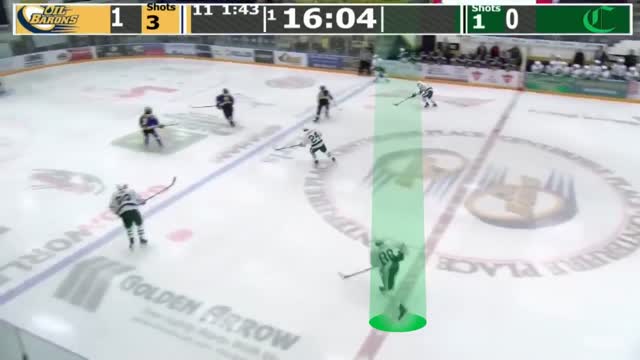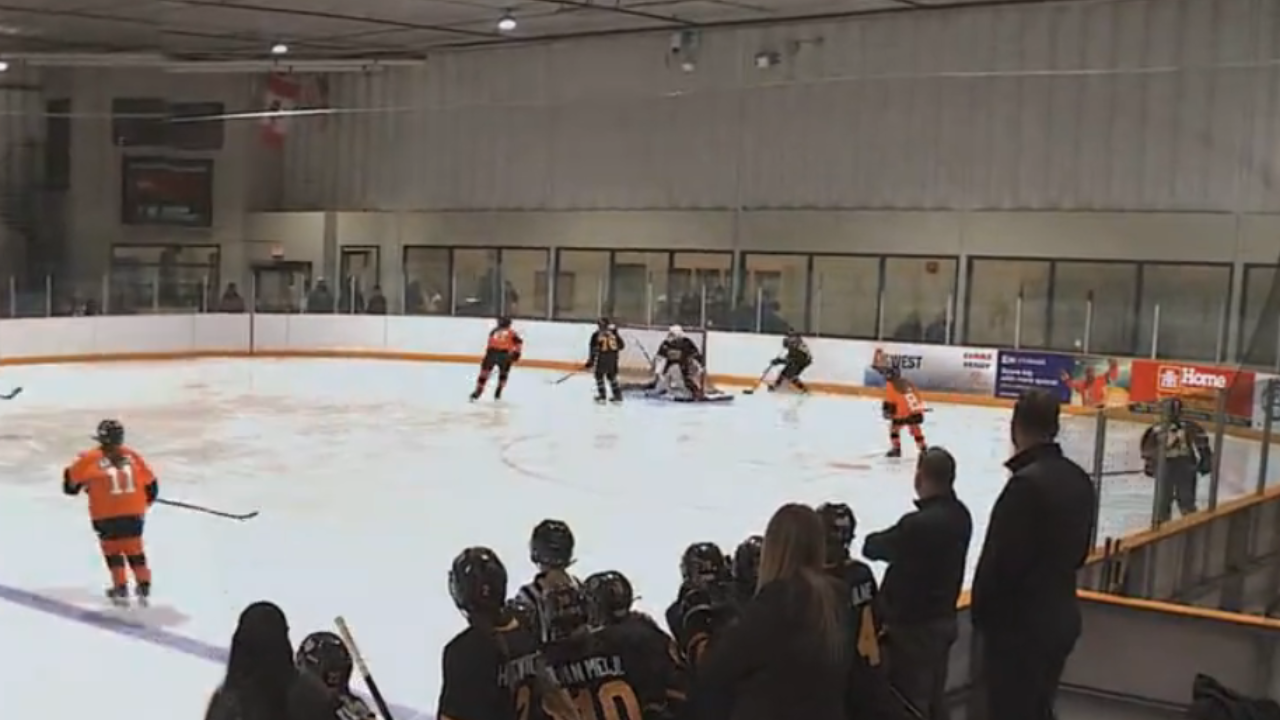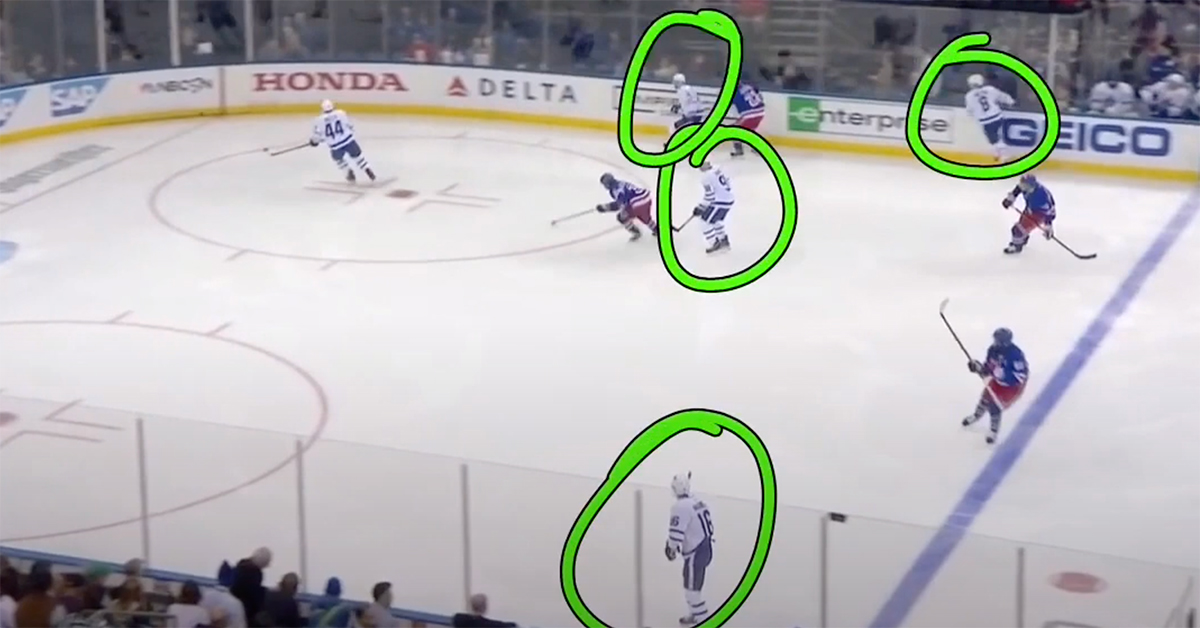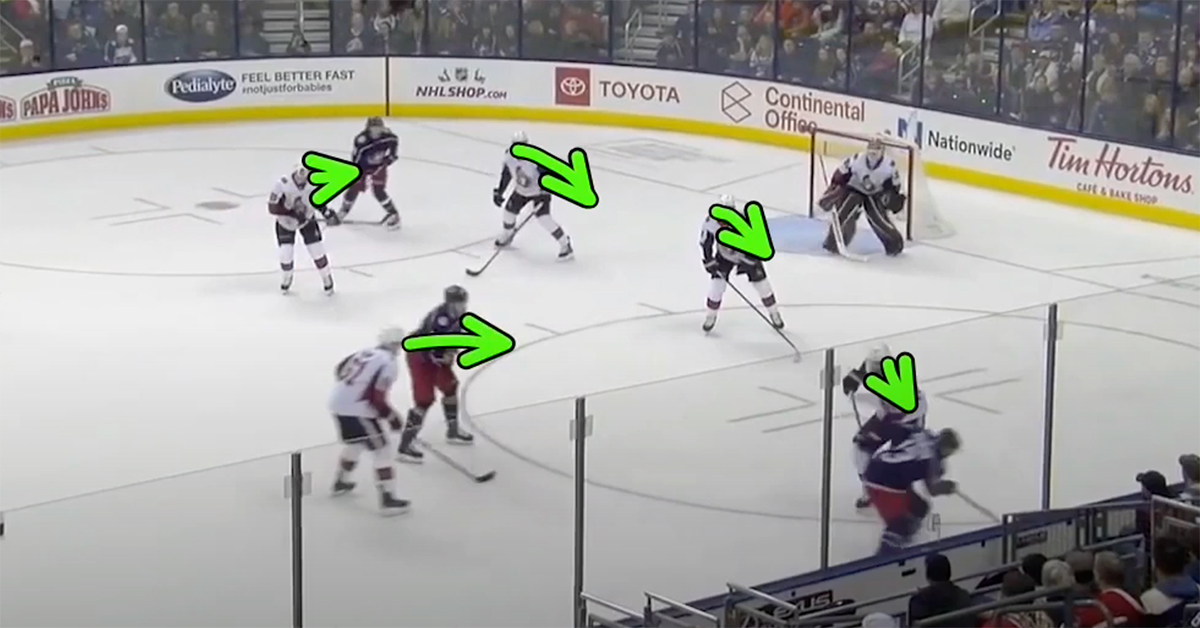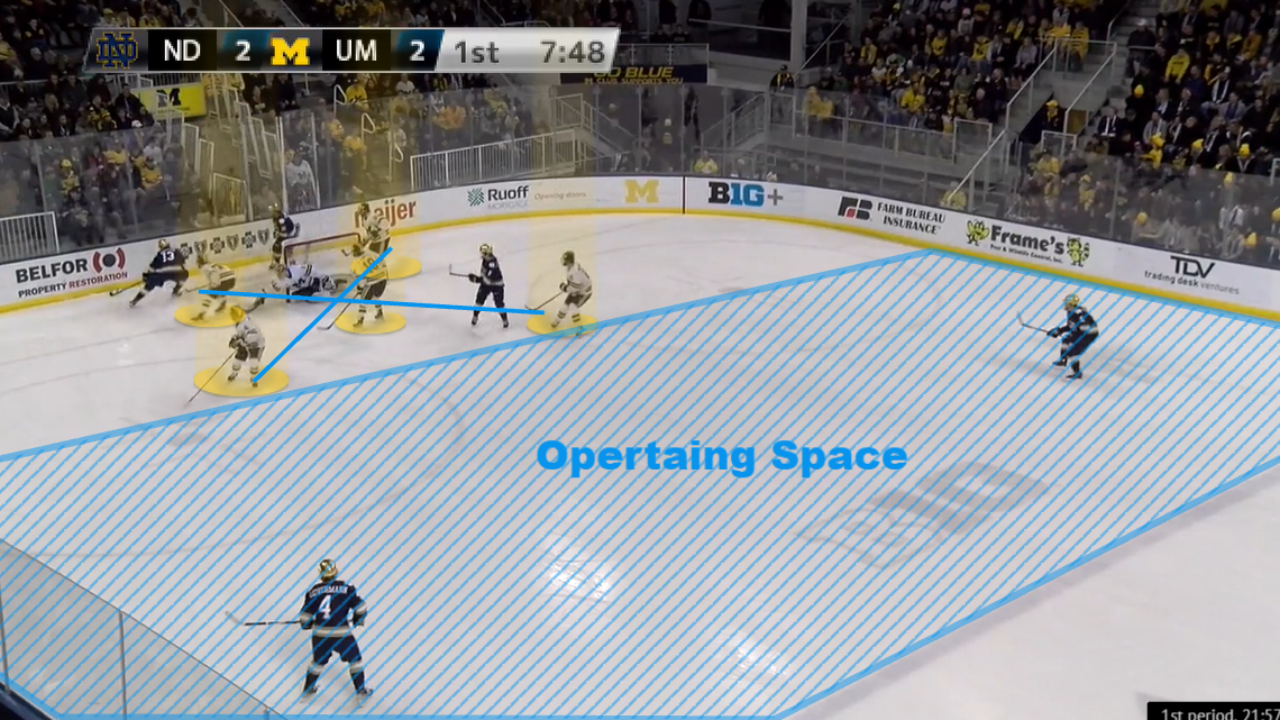
A major key to strong offensive zone play is creating time and space to operate cleanly without pressure.
Coaches are always looking for loopholes in the opposition’s defensive zone structure to find these opportunities.
This particular example lies in the defensive team’s approach to defending a puck that’s behind their net. Most teams will have all 5 players retreat to the slot/house and form an X pattern or what’s commonly referred to as “5 on a die”.

As the defending team collapses to protect the house, the offensive Defensemen are generally considered a secondary threat. Delivering the puck to an offensive Defensemen (from behind the net with an indirect/bank pass) not only gives them room to operate but also creates a better puck to control. As the puck bounces off the half wall it naturally leads the Defensemen towards middle ice. The puck will also have less spin than a direct pass, which is an easier 1 time shot or sprint to mid ice for the Defensemen.
The opposition’s winger (who is responsible for this Defensemen) has a lot of distance to cover and low percentage chance of getting out to the blue-line in time to disrupt or create a turnover…their best option is a shot block.
The attached video & images shows this concept in action, notice the operating space the offensive Defensemen has been allotted by a properly delivered puck.
What you typically see at the minor hockey level is the offensive forward with the puck (behind the net) will skate it to the corner or up to the half wall before telegraphing a direct pass to the Defensemen
Defensemen should understand this concept and have a thermometer for what kind of pucks they are receiving. If your Defensemen have with limited operating space and struggle to attack middle ice, one possible issue could be the quality of pucks they are receiving from down low.
In a future article we’ll explore this concept further, specifically power play exchanges.

